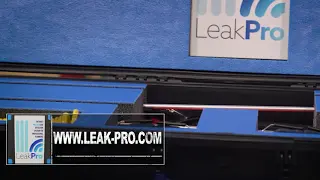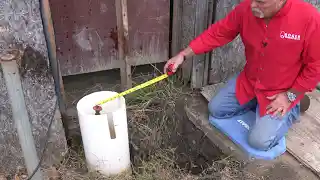From heat-sealing a pipe without using glue or fittings, to rigging a Dremel-modified screw head as a countersink, to blocking water flow with a balloon, these methods push the limits of what you can do when you’re missing standard tools. The results may surprise you.
A Quick Look at Household Plumbing Hacks
People attempt plumbing hacks for various reasons. You might be in the middle of a job with no available parts, or you might want a quick fix before a professional arrives. Sometimes it’s simply a challenge to see what’s possible with the items on hand. While clever, these tricks aren’t always foolproof. Before you start heating PVC or rummaging for balloons, keep in mind that code compliance, safety, and long-term reliability all matter.
Whether you’re a DIYer or an experienced tradesperson, you’ll find that unconventional methods can rescue you from a jam. But they also risk partial success, leaks, or code violations. As you read through these hacks, ask yourself: which ones might actually help in an emergency, and which ones do more harm than good?
Hack #1: Sealing PVC or CPVC with a Heat Gun
Picture this scenario: you have a broken PVC or CPVC pipe, and there’s no primer, glue, or cap in sight. Maybe you’re out in the field, the nearest hardware store is an hour away, or it’s midnight and your local stores are closed. The idea is to melt the end of the pipe using controlled heat—like from a heat gun or even a candle or small torch—and pinch the softened plastic together.
-
Gather Basic Tools
- A heat source (heat gun is safer than open flame).
- Gloves and safety glasses.
- Pliers or something to press the softened pipe end closed.
- A container of water to test for leaks later.
-
Steps
- Cut or break the damaged pipe section to get a clean end.
- Warm the end of the pipe with steady, medium heat, rotating as you go.
- When the pipe is soft enough to deform, use pliers or your gloved hand to pinch it shut.
- Press the edges together carefully, ensuring there’s no gap.
- Let it cool completely.
-
Test for Leaks
- Place the sealed end in water or subject it to slight air or water pressure.
- Look for bubbles or drips.
- One demonstration showed that CPVC sealed shut fairly well, holding up to around 50 psi. PVC, on the other hand, had small leaks.
-
Usefulness and Limitations
- Heat-sealing works better on CPVC due to slightly different chemical properties.
- The joint might hold lower pressures, but it’s not a guaranteed permanent fix.
- This method can warp or burn the pipe if you apply too much heat.
If you’re in a dire emergency—like a break on an irrigation line outside your home—this may buy you time. But for indoor plumbing or code-compliant repairs, the standard method (primer and solvent-welded fittings) remains the best.
Hack #2: Creating a Countersink with a Modified Screw Head
Sometimes you need to install screws in a piece of wood or cabinetry, and you want them flush. Typically, you’d use a drill bit with a countersink attachment. But what if you don’t have one? One hack is to modify a screw head into a mini countersink bit and then attach it to a drill.
-
What You Need
- A Dremel or small rotary tool.
- A screw with a bigger head.
- Eye protection for sparks.
- A way to cut off the screw head cleanly (like a metal cutting disc).
-
Steps
- Use the Dremel to notch the screw head in multiple spots (usually 3).
- Cut off the screw head from the rest of the shank.
- Place the screw head in your drill chuck (like you would a small bit).
- Carefully drill into the wood surface to create a shallow countersink shape.
-
Results
- The notches act like mini cutting edges, scraping away a cone of wood.
- In the demonstration, it actually created a neat countersink for the screw head.
- Be careful not to press too hard or at too high an RPM—this is not an official countersink bit.
-
When to Use
- If you’re in a pinch and just need a basic countersink for small screws, it can work.
- Ideal for a quick fix if the nearest hardware store is far away.
- If you have multiple holes to countersink or desire a pristine finish, a real countersink bit does a better job.
Hack #3: Using a Balloon to Stop Water Flow
Sometimes you need to do a tie-in or make a minor repair in a line that still has water trickling through. In large office buildings, telling everyone not to flush or run water doesn’t always succeed. If you open the line, you risk water (and worse) gushing out. So the balloon trick involves slipping a balloon into the pipe, inflating it, and letting the balloon act like a temporary plug.
-
How It Works
- You feed a balloon into the cut pipe or cleanout.
- Blow it up until it fits snugly against the pipe walls.
- Tie the balloon, and it blocks water from upstream usage.
-
Risks and Best Practices
- The balloon only holds until water pressure is low enough. If there’s a big surge, the balloon may dislodge.
- You must retrieve the balloon later. Often you can pull the knot or gently pop it so water carries out the remains.
- Always keep in mind that if the water pressure behind the balloon becomes too high, you could face a sudden blowout.
-
Potential Scenarios
- Dripping lines in older buildings where you can’t fully shut off the supply.
- Gravity-fed drain lines from an upper floor when you’re tying in a lower floor.
- As an alternative to an expensive test ball plug if you only have occasional or partial flow.
-
Effectiveness
- In a demonstration, the balloon stood up to modest water flow (equating to a few PSI) before being popped.
- For substantial pressure or deeper lines, the balloon might fail.
- A test plug or inflatable test ball is more official, but the balloon can be a quick hack for very short-term use.
Should You Attempt These Hacks?
Hacks come in handy when you’re missing the right tool or are in an unexpected jam. However, each method has clear limitations:
- Heat-Sealing Pipe: Potentially works for CPVC in low-pressure settings, but it can fail under higher pressures. Using normal fittings and solvent is far more reliable.
- Modified Screw Countersink: Fine for a small job if you only have a Dremel, but it’s not a professional-grade solution.
- Balloon Plug: Great in a pinch when you can’t wait for water flow to stop, but only trust it for minimal flow or short tasks.
Plumbing codes require permanent solutions that meet safety standards. Hack-type repairs may breach code and might not last. If you do these on your own property for a temporary fix, you assume the risk. Always weigh the cost of a real fix against the potential mess if your hack goes wrong.
Safety and Practical Tips
- Protective Gear
- Gloves, goggles, and respirators keep you safe from chemical fumes, sparks, molten plastic, or sewage bacteria.
- Test Thoroughly
- For the pipe-sealing hack, do a water or air pressure test in a controlled manner to confirm no leaks.
- For the balloon method, let water trickle or watch for building pressure. If the balloon shifts, be ready.
- Keep an Exit Strategy
- Don’t let any hack remain inside your piping if it can’t be easily removed (like the balloon).
- If a piece of your improvised tool breaks off in the line, that may create an even worse clog.
- Document the Hack
- If you’re a professional plumber, disclaim to the client that this is a non-standard approach, and ensure it’s a temporary measure only.
Overall Lessons
People who watch “Trying CRAZY Plumbing Hacks” find it entertaining but also learn practical boundaries. For instance, the heat-sealed CPVC trick surprisingly held around 50 psi. That might be enough for an emergency water line fix in a small irrigation system. The Dremel countersink hack does a decent job if you literally have no store-bought bit on hand. And the balloon plug can help if you must handle a tie-in under partial flow. Yet none of these are substitutes for official plumbing best practices. For real compliance and long-term peace of mind, it’s always best to:
- Use code-approved fittings and glues
- Carry a range of standard drilling or cutting tools
- Shut off water fully and drain lines before making changes




